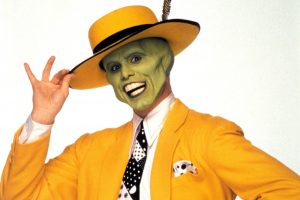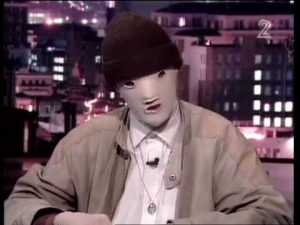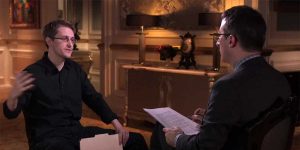Artist and game designer, Digital Utopia editorial board
Are you smiling at me, or are you scowling?
***
Winter, a pharmacy in Copenhagen, 2020. I’ve been studying Danish for a few months, but am still far from understanding the language and speaking it. I ask the pharmacist about a pack of vitamin D, to somewhat relieve my winter depression. She does not understand what I’m saying; I do not understand her reply. Both our faces are covered by CoVid masks. She cannot even notice I’m speaking english, and so I do not notice that she’s answering in Danish. I try to joke about it, and smile. Even if she got the joke, how would she know I’m smiling at her? And how would I know whether the joke made her smile, or whether she’s scowling at me, “stupid tourist, there are people waiting in line”. I pay and walk away, out to the streets.
***

Winter, a pharmacy in Copenhagen, 2020 // Are you smiling at me, or are you scowling?
***
Winter, Hefer Valley, Israel, 1991. They say that Saddam has chemical warheads in the rockets he’s firing on us. Every citizen is issued by the state a personal protective kit that includes two objects: a syringe filled with Atropine, and a gas mask. The syringe penetrates the skin, the heart, an object of dread, and we will never use it. The mask envelopes the face, a tempting armor, an object of desire, and we will use it a lot. We cover not just our faces but also our home, one room chosen to be completely sealed with plastic sheets and sticky tape. At the sound of alarm we don our masks and head towards the safe room, stepping onto the stage of the domestic theater. I am a child, and as children do I have little sense of what’s a game and what’s not a game. I understand that something real is happening, but also am excited by the ritual, the intoxicating smell of rubber filling my nostrils. Years later we will learn that there were no chemicals inside the warheads, and the masks were perhaps part of a political theatre. But they remain part of the homefront culture, the show has changed reality: the safe room was solidified in law, and every new apartment built in Israel has to have access to a fortified safe space. At school, the teacher shows us how to decorate our protective kit’s cardboard box with crayons and stickers – as if it wasn’t already an attractive, enchanting object, even sans colors. And they teach us to keep it at arm’s reach, always.
***
Cinemas, 1994. Jim Carrey plays Stanley Ipkiss, a pitiful dork, who finds a magical mask that is meant to externalize whatever is suppressed in the person who bears it. The result is a horny, vengeful, narcissistic bully. Later in the film, a violent mobster bears the mask and becomes an even more violent mobster. A dog bears the mask and becomes even more of a dog. The logical conclusion is that Stanley Ipkiss was always a latent horny, vengeful, narcissistic bully. At the end of the movie, Stanely gets the girl.
***

Winter, Hefer Valley, Israel, 1991 // An Israeli family in a bomb shelter, all wearing ABC (Atomic/Biological/Chemical Weapons) masks, Image by Jane Fresco, Herzliya, from Wikipedia

The Mask, Jim Carrey, 1994
***
I’m on an airplane, a surgical mask on my face. It’s a long trip, I got to the airport in public transit, the mask has been on me for many hours now. I can smell my own breath. My scent fills the nose, amplified by the paperlike fabric. There is nothing normal about this, an aspect of myself I usually never notice. Like being in a room made of mirrors, like seeing myself from behind. What a mistake, I should have taken my cotton mask.
***
Cinemas, 1999. Keanu Reeves plays Thomas Anderson. He’s being interrogated by a clandestine government agency. They confront him with the fact he bears two identities – one registered in the tax registry under his given name, the other under a chosen name online. Only one identity is deemed acceptable by the agency. Thomas knows his rights, he demands his phone call. “Tell me, Mr. Anderson – what good is a phone call, if you are unable to speak?” riddles the agent, and Thomas discovers that his mouth has disappeared, the lips now connected in a smooth strip of skin from the nose to the chin.
***
Israeli TV Studio, 2000. It’s a popular evening talk show, and tonight’s guest is the hottest musical sensation of the season. Years before his rise to recent fame, this singer suffered two terrible accidents – a fall off a scaffold that has left him paraplegic, and a gas tank explosion that caused severe burns to his face and body. He lives in an abandoned house in a poor suburb, is known only by his alias “The Burned”, does not give any public performances, and has given one interview so far, to the biggest daily newspaper in the country, with his face completely covered by a medical mask. His voice trembles when he speaks, and becomes clear only when he begins singing his top-charts hit “Deception of Grace, Illusion of Beauty” (based on a quote from the Book of Proverbs) (1). The song is about a man in love who cannot reach his beloved, and it asks “how come this lie has lips?”. In the TV studio after singing, the Burned gets up from his wheelchair and unmasks himself to reveal flowing locks of thick hair and a beautiful face – the face of the actor-singer Haim Zinovich. With glistening eyes, on the verge of tears, Zinovich tells the interviewer that after many long years of failed attempts to reach an audience, he realized that journalists like him would never give him stagetime without this cover story.
***

Israeli TV Studio, 2000 // “The Burned”, actually actor-singer Haim Zinovich, interviewed by Yair Lapid
***
CoVid masks are a double whammy for people with eyeglasses. Especially on cold winter days. My breath gets trapped inside the mask, blowing up and out to my cheeks. I step outside, and immediately my glasses are filled with steam, obscuring my field of view. When I was younger I protected myself from the world by opting to wear thick-rimmed glasses. But now that I’m older and more confident, wishing to open myself to the world and to let it reach me, I choose lighter frames. And then comes the mask and covers my eyes in a misty veil. I walk carefully down the street, breathing slower to minimize the effect, and other pedestrians cannot see my eyes.
***
New York University’s School of the Arts, 2010. In the graduation exhibition of the prestigious Interactive Telecommunication Program, a graduate named Adam Harvey presents a series of photographs in which male and female models wear make-up designed with asymmetrical patterns, meant to disrupt and evade digital facial-recognition systems. The project is a hit, and Harvey is invited to produce more designs for a New York Times photo shoot. We’ll get back to that later.
***
The French Senate, 2010. After at least three decades of attempts at legislation and public scandals, mainly around the use of religious symbols in public schools and especially around the headdresses of Muslim women and girls, the Senate passes Act No. 2010-1192 – “Loi interdisant la dissimulation du visage dans l ‘espace public” – a law to prevent face-covering in public space, the first of its kind in the European Union. The law is primarily aimed at preventing the use of face covers such as the niqab or burqa. Supporters of the law see it as an expression of French secularism, opponents see it as a drastic violation of personal liberty. Both supporters and opponents see the other side as catastrophic for feminism and as a serious case of religious coercion.
***
Cinemas, 2012. Batman is once again the hottest superhero thanks to a film series by Christopher Nolan, a director who’s known for dealing extensively with the illusory dimension of cinema. Batman wears a mask concealing his other identity – Bruce Wayne, a billionaire heir to a huge industrial corporation. In the third film in the series, Bruce Wayne / Batman faces off against a working-class hero: a masked revolutionary named Bane. The mask on his face is not meant to hide his identity, but rather is a medical device that helps him cope with severe physical pain, caused by a chronic problem that’s a result of the harsh conditions he grew up in.
***
The Internet, 2013. Edward Snowden leaks thousands of confidential US government documents, which reveal, among other things, the existence of PRISM – a system for mining and cross-referencing information from countless users of online services of the Internet’s giant infrastructure corporations, such as Facebook and Google. The exposure further increases interest in Harvey’s camouflage makeup. We’ll get back to that later.
***

New York University’s School of the Arts, 2010 // Graduation exhibit, the Interactive Telecommunication Program // Adam Harvey // Hair by Pia Vivas, Model: Jen Jaffe

Woman Wearing a Burqa // September 14, 2010, the French Senate passed into law Act No. 2010-1192 – “Loi interdisant la dissimulation du visage dans l ‘espace public’ – preventing the use of face-covering in public space, the first of its kind in the European Union. The act became known publicly as “the Burqa Law”.

Cinemas, 2012 // The Dark Knight Rises by Christopher Nolan // Two masks representing two different, diametrically opposing, social and psychological structures, at conflict // The Superhero Batman & the villain, Bane.

In 2013, following the release of thousands of classified documents and his escape from the US, NSA computer intelligence consultant Edward Snowden had received temporary residency status in Russia. Two years following the incident, in April 2015, political comedy commentator John Oliver devoted his show “Last Week Tonight” to surveillance and privacy issues and had presented an extensive interview with Snowden.
***
My living room, 2016. I’m sitting on the couch, leaning forward, an oxygen mask on my face. It is connected to an old pneumatic nebulizer, its plastic casing is yellowing from a lifetime of use, its engine as noisy as a tractor, the rattling sound fills the small apartment. Seasonal flu has exacerbated my asthma, the great weakness overcomes me and clouds the senses, but I am well trained: 50 CC of Ventolin, 150 CC of water. How long has this device been with me? 25 years? 30 years? Throughout my adult life, I have hardly allowed anyone to see me using it. That is the real nudity. But tonight my partner is there. Tonight I let her see.
***
Normandy Beach, 2017. It is right before dawn on June 6, 1941. I crawl with my platoon towards the German bunkers, bullets whizzing above our heads. It is the 14th edition of a popular action videogame series named Call of Duty. Visual technology really improved in the two decades since this genre became popular, and can now present violence in all its gory details. When my comrade is hit by a mortar shell only a few steps from the water, I see the painful expression on his face from up close. The officer looks me straight in the eye and tells me to get myself together, this is what I’ve been training for, we have to breach the bunker. When I get to the trenches the real fun begins, no longer just evading, I am sniping the enemy left and right. But I cannot see my enemy’s faces: the game spares me the full results of my actions. Every time they die by my rifle, the game twists their body so that they fall facing down, relieving me from the full impressions of my duty. I press on through their defenses, stepping on their bodies, inland through the trenches and the bunkers, my opponents always face-down in the mud.
***

Normandy Beach, 2017 // The 14th edition of the action videogame series Call of Duty
***
When exactly did soldiers begin hiding their faces? I can’t recall the moment. I’m not talking about blurring face photos of military pilots and elite soldiers in news articles – that’s an old practice. I mean the newer phenomenon of soldiers wearing a “tactical mask” that only reveals the eyes under their helmet, like a ninja in a soldier’s costume. I suppose the reason for the new concealment is the same as the old reason: to prevent personal harassment, and especially to prevent personal prosecution for war crimes. A sort of acceptance that modern soldiers deal mostly with a civilian population, and function mainly as policemen, only without the theater of protecting it. All that’s left is to hide them from a different police.
***
In Vipassana meditation they teach you that the road to insight passes in attention, and attention grows from observing the things you would usually do in a state of distraction. You start from the body itself: the thing most available to us, 100% of the time and always wired to our brain. Your most basic bodily function – breathing – must be done without attention. How could you even live with intentional breathing? So you start there. Vipassana begins by defamiliarizing breathing itself. Perhaps it is no way to live, with uncanny breathing, but uncanny breathing is an effective gateway to meditation. It’s all coming back to me with the mask on. I feel each breath in all my senses – the heat and the steam, the taste and smell, the sound of myself echoing between fabric and skin.
***
Eye of the storm, 2018. Every kid in the world is playing ‘Fortnite’ (Inspired by the 2000 Japanese film “Battle Royale”) (2) : a hundred players are parachuted on an island; their goal is to murder each other, the winner is the last one standing. The creators of this videogame earn their fortune by selling costumes and masks that the players’ virtual avatars can wear. These costumes are called ‘skins’. Fan-favorite skins include a banana costume and a costume in the form of the fictional contract killer John Wick. Rich kids, whose parents allow them the purchase of new skins every Fortnite season, use the derogatory term ‘default’, coined after the free-of-charge default character skins, to bully poor kids .
***
The Black Death mask is back in vogue. Not yet as an actual clothing accessory, but as an image: “plague doctors”, clad in black robes, their faces hidden behind a mask with a long pelican-like beak full of perfumes and herbs, are recently making more and more appearances in movies, games, comics. The image is almost always divorced from the historical role – they do not treat the sick – the mask mainly serving to herald death, often mixed with other Gothic, Victorian, and Medieval-Christian imagery.
***

Back in vogue // The Black Death mask
***
I am traveling from a place where it is expected to wear a mask in public to a place where it isn’t; The mask is still on me, out of habit, and suddenly I feel all eyes on me, I am discovered as a stranger. I return from a place where it is not expected to wear a mask in public to a place where it is, and forget to put on the mask in transit; then I notice the eyes staring at me, feel exposed, I am discovered as a stranger. For most of the world, CoVid masks have emerged as a policy with no custom or tradition behind it, and yet their use patterns have quickly become group signifiers. I walk into a new place and try to guess what its norm will be like – is it a place of masks? A place without masks? Do I prefer to integrate, or to maintain my principles – even though my principles themselves are new and foreign to me?
***
Recently a popular use of “Machine Learning”, a method that allows computers to understand things on their own, is to identify and alter human faces. Social media users take images of their political leaders and puppeteer them into giving the hopeful speeches they will never actually dare to give; the technique is known as “Deep Fake”. Video-calling software allows callers to distort their own faces into a cartoon, or to put digital masks on their reflections. The technique is known as a “filter”. Usually when a filter appears the conversation stops, while all attention is given to the mask, and does not continue until the mask is removed.
***
***
The Internet, 2020. Global superpowers such as China, the UK and the United States are expanding their use of facial recognition systems, and employ them to monitor civilians. Public awareness of this is growing between the Hong Kong demonstrations against the extradition bill and demonstrations following the assassination of George Floyd and Breonna Taylor in the United States. Fashion bloggers and online influencers photograph themselves experimenting with Harvey’s anti-surveillance makeup method. Other designers have followed suit to create plastic masks with lenses that distort the face, hats that project a different face on top of the wearer’s, glasses with an array of infrared bulbs to blind scanners. None of these camouflage techniques could actually compete with the rapid development of surveillance systems in the age of machine learning, none of them could even be accessible to those who do not have a lot of money or free time, and all of them would make their users stand out as particularly strange and conspicuous in the eyes of any human law enforcer, even if the machine will not recognize them for a moment. But the fantasy of individual opposition to tyrannical rule, combined with an aesthetic reminiscent of cyberpunk cinema, is too tempting to let go. Like the hipsters of the early 2000s, who imagined they could resist capitalism through alternative consumerism, so do some hipsters now believe they can resist tyranny through alternative clothing and makeup.
***
They say that in the age of Covid it is more crucial than ever to master the smize. Smize is a shorthand for “smiling with your eyes”, as coined by Tyra Banks in 2009. I am far from mastering the smize. I have no technique. I try, but instead of alluring merriment, I just look slightly angrier. When I actually smile, my eyes become slender slits; a balance between the widening mouth and the narrowing eyes. But now with my mouth and nose covered, every smile is an almost complete closure of my face. You couldn’t tell whether I’m smiling at you, or scowling.
Footnotes and Other Stray Thoughts
1 // The Burned, “Deception of Grace, Illusion of Beauty”, Lyrics by Haim Zinovich, Melody by Haim Zinovich & Tomer Biran. Based on the Proverbs 30:31 verse “Charm is deceptive, and beauty is fleeting; but a woman who fears the Lord is to be praised”.
2 // Battle Royale, Japan, 2000, by Kinji Fukasaku, inspired by the William Golding novel “Lord of the Flies”.


